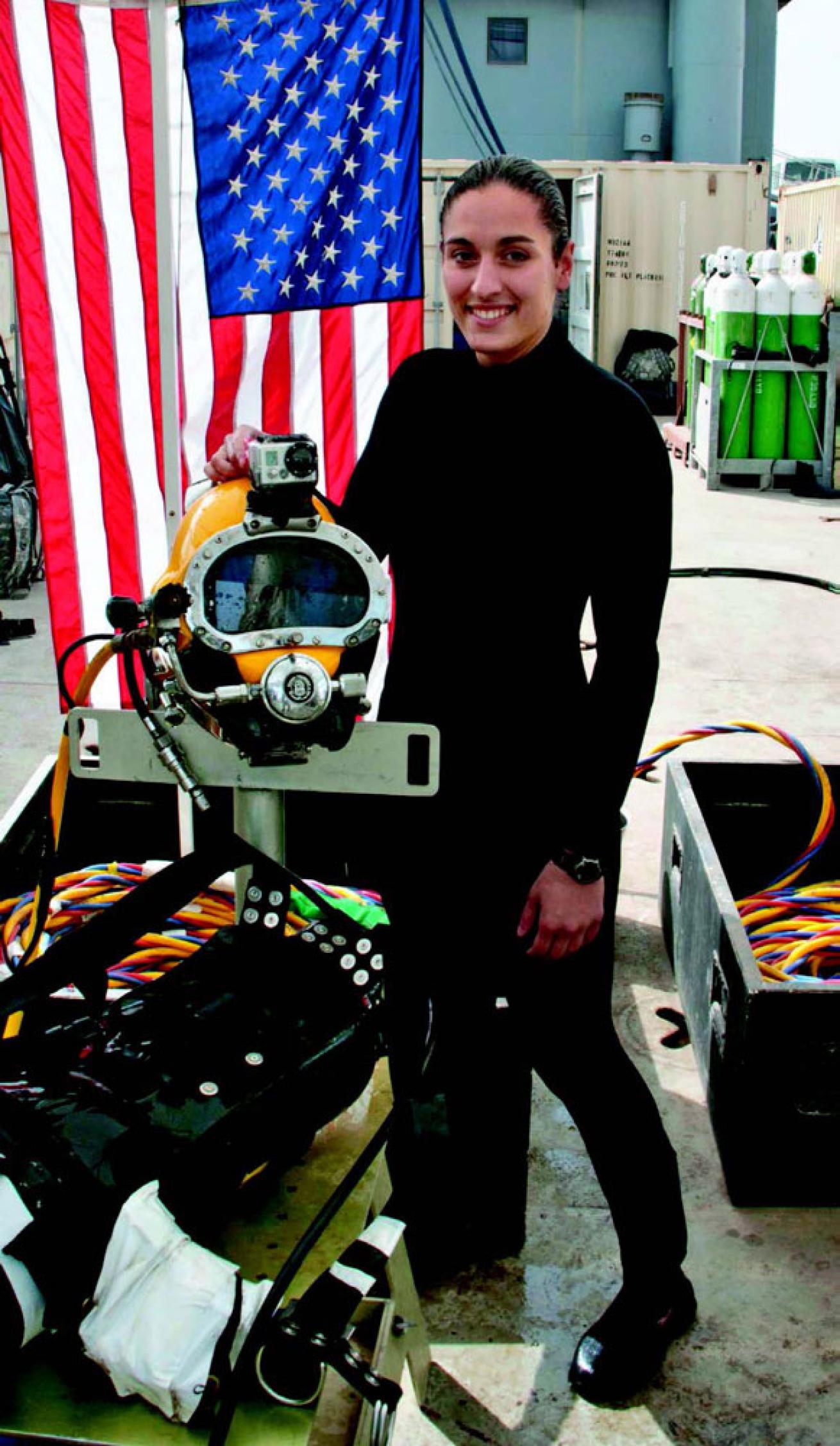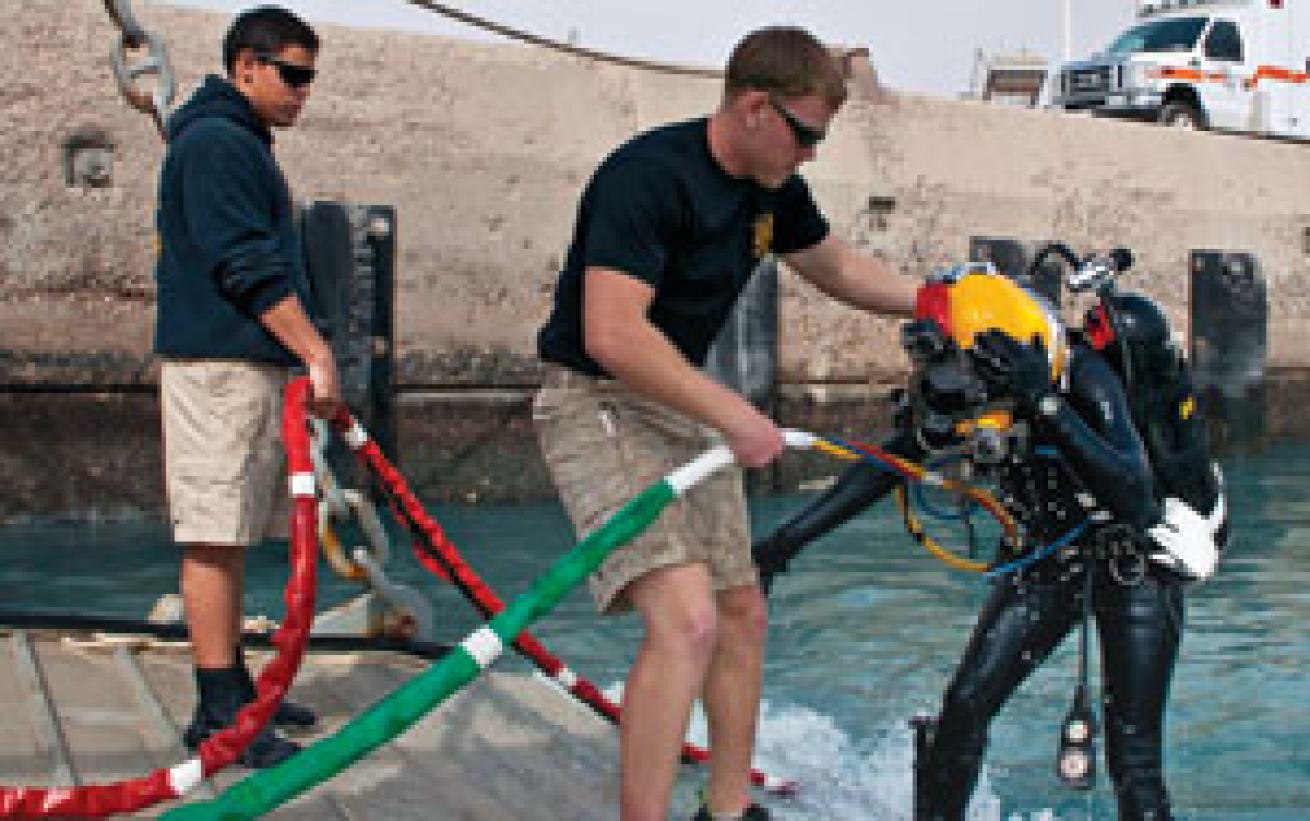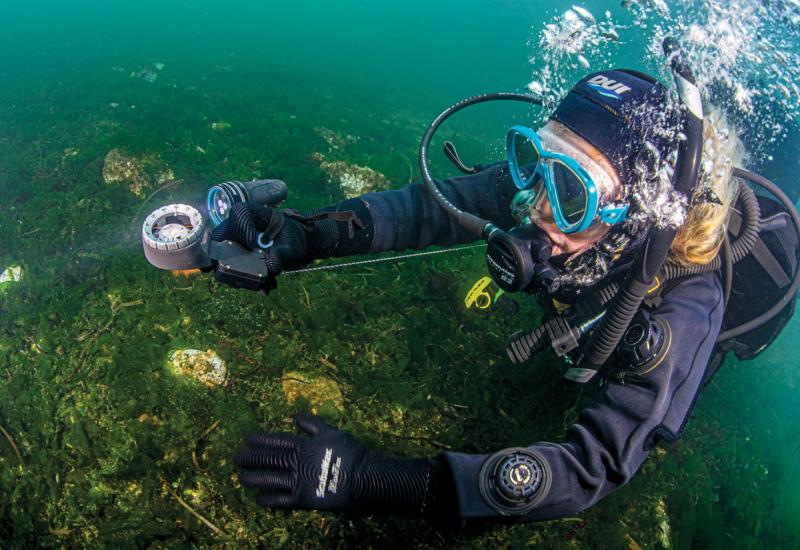What It's Like to be a Female Army Diver

Lt. Christie Plackis
Courtesy US Army Staff Sgt. Micah Vandyke
In the Army, gender challenges are about logistics. I trained for two years before dive-school tryouts. A lot of that was upper-body work to meet training standards. You have to complete 46 push-ups in two minutes, and a minimum of six pull-ups.
I’m a small woman. My upper body isn’t as strong as that of some people, so it took more initiative on my part to meet the fitness requirements. That’s one great thing for our standards — they’re the same for everybody. You know your body, and only you know if you have to work harder to get there.
Much of our training, like swift-water rescue, isn’t easy for anyone. In West Virginia we studied with the River Riders to learn the hydrology of fast-moving water. As soon as we were at depth in the current, I felt like a rag doll — I think everyone did. In dive gear, we learned to be properly tied down and constantly alert — or discover the consequences. At one point, I was carrying a rock to weight myself in place. The river pried it from my hands, pushing my finger against another rock. That digit swelled until a needle poke was needed to relieve the pressure.
Another training exercise that emphasizes the importance of physical fitness is our two-week annual Deep Blue. One day the seas picked up — waves grew to 5 feet. While wearing a 30-pound dive helmet, a standard scuba tank, weights and boots, I had to hoist myself onto a platform. Then as a unit, we had to pull the rest of the crew from the drink. We were maneuvering around 2 tons of steel slapping up and down in the waves. If we didn’t muscle up the strength to ride the swell, we would have been endangering ourselves and our surface support — they could have been swept under and injured by the bow ramp.

Is every day easy? No. But with diving, the playing field is level. The training exercise that best demonstrates this is underwater football. In regular football, the big guys win. In our version, it’s about how deep you dive, how strong a swimmer you are, how calm you stay underwater, how long you can hold your breath, and how well you push off the bottom. These are the game changers. This is what I do best.
Want More of Scuba's What It's Like? Check out these links!
What It's Like to Get Bent | What It's Like to Get Bombed Underwater | What It's Like to Dive with Wild Bears

Courtesy US Army Staff Sgt. Micah Vandyke
In the Army, gender challenges are about logistics. I trained for two years before dive-school tryouts. A lot of that was upper-body work to meet training standards. You have to complete 46 push-ups in two minutes, and a minimum of six pull-ups.
I’m a small woman. My upper body isn’t as strong as that of some people, so it took more initiative on my part to meet the fitness requirements. That’s one great thing for our standards — they’re the same for everybody. You know your body, and only you know if you have to work harder to get there.
Much of our training, like swift-water rescue, isn’t easy for anyone. In West Virginia we studied with the River Riders to learn the hydrology of fast-moving water. As soon as we were at depth in the current, I felt like a rag doll — I think everyone did. In dive gear, we learned to be properly tied down and constantly alert — or discover the consequences. At one point, I was carrying a rock to weight myself in place. The river pried it from my hands, pushing my finger against another rock. That digit swelled until a needle poke was needed to relieve the pressure.
Another training exercise that emphasizes the importance of physical fitness is our two-week annual Deep Blue. One day the seas picked up — waves grew to 5 feet. While wearing a 30-pound dive helmet, a standard scuba tank, weights and boots, I had to hoist myself onto a platform. Then as a unit, we had to pull the rest of the crew from the drink. We were maneuvering around 2 tons of steel slapping up and down in the waves. If we didn’t muscle up the strength to ride the swell, we would have been endangering ourselves and our surface support — they could have been swept under and injured by the bow ramp.

Is every day easy? No. But with diving, the playing field is level. The training exercise that best demonstrates this is underwater football. In regular football, the big guys win. In our version, it’s about how deep you dive, how strong a swimmer you are, how calm you stay underwater, how long you can hold your breath, and how well you push off the bottom. These are the game changers. This is what I do best.
Want More of Scuba's What It's Like? Check out these links!
What It's Like to Get Bent | What It's Like to Get Bombed Underwater | What It's Like to Dive with Wild Bears










